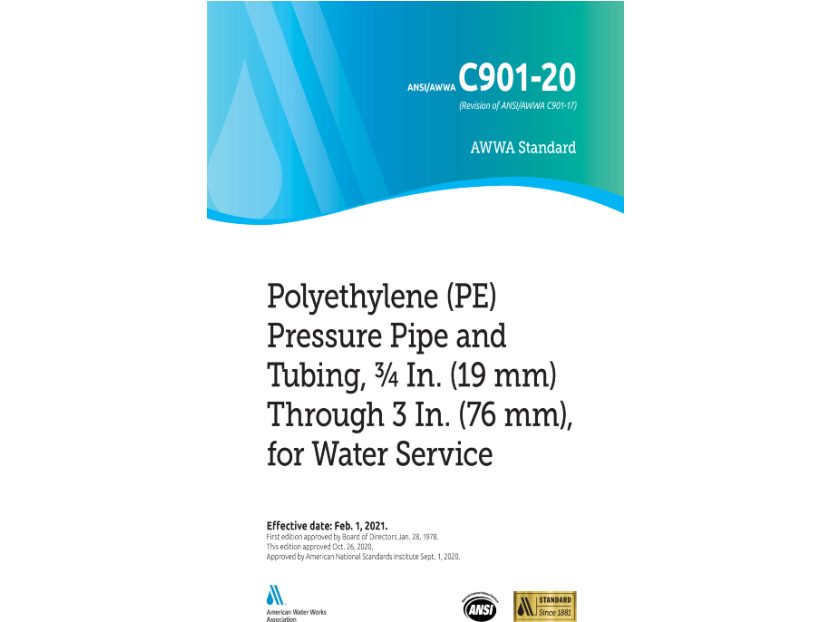ANSI/AWWA C901 Update Heightens Standards for HDPE Water Service Pipes

According to the Plastics Pipe Institute (PPI), the 2020 revision to the AWWA C901 standard provides specifiers and end-users with the best grade of high-density polyethylene (HDPE) pipe for water service pipes. PPI is the major trade association representing the plastic pipe industry.
Under this updated standard, HDPE pressure pipes and tubes from 3/4 inch through three inches, produced under C901-20 must be manufactured from PE4710 compound and be SDR9 (PC 250). It also raises the cell classification for oxidative resistance to CC3 (for potable water piping systems), the highest and only acceptable level of chlorine and chloramine resistance in potable water systems. PPI members, along with representatives from utilities, professors, and users led the initiative and participated in the process for the updating.
“The seventh and latest edition of this standard requires the use of CTS or IPS-sized HDPE pipe, and removes the option for special sizes that allowed for different SDRs,” said Camille George Rubeiz, P.E., F. ASCE, senior director of engineering for the Municipal and Industrial Division of PPI. Rubeiz, who is also the co-chair of the HDPE Municipal Advisory Board, chaired the AWWA C901 Subcommittee responsible for updating the standard.
“Basically, the changes to the standard eliminates the use of thin-walled HDPE pressure pipe and tubing for potable water, reclaimed water and also for wastewater service. It’s another way for the HDPE industry to protect communities from non-compliant products and provide the best solution for the replacement of dangerous lead service lines.
“Also, for potable water with chlorine or chloramine residuals,” he continued, “C901-20 requires HDPE pipe with a minimum cell classification of PE 445574(C or E) CC3. CC3 calculations are available in the updated PPI TN-49 (2020) document and in HDPEapp.com.”
Rubeiz said that there is also related information in the recently released AWWA M55 (2020) manual. “This is a comprehensive manual about HDPE pipe, fittings, fusion, electrofusion, service connections, standards, model specifications, earthquake applications, case studies, and installation techniques such as open cut and trenchless methods.”




